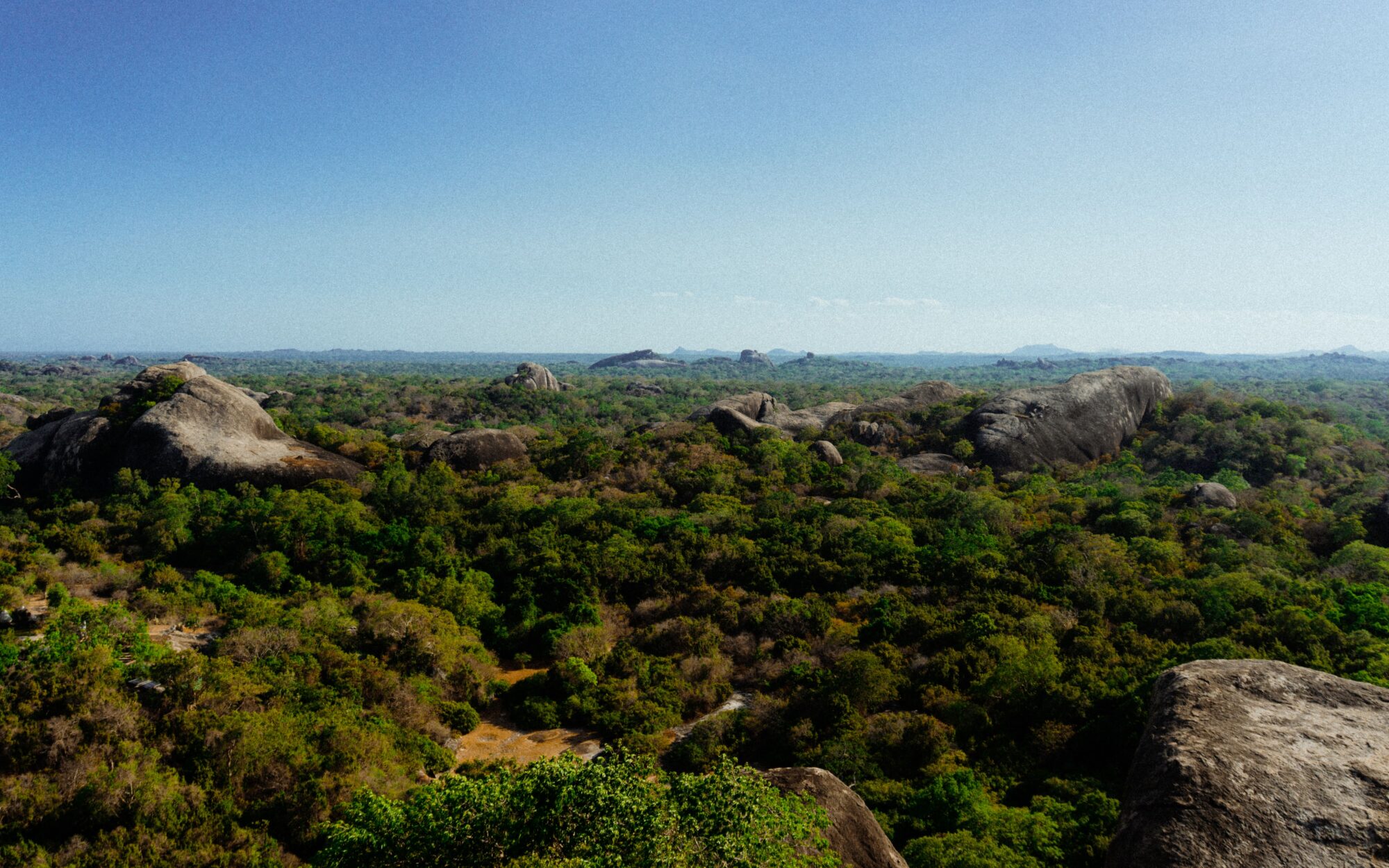Kudumbigala Monastery is a secluded and ancient Buddhist monastic complex located near Arugam Bay in the Eastern Province of Sri Lanka. Built in 246 B.C. during the reign of King Devanampiyatissa, it is one of the oldest monastic sites in the country, embodying the spiritual and historical richness of Sri Lanka’s Buddhist heritage.
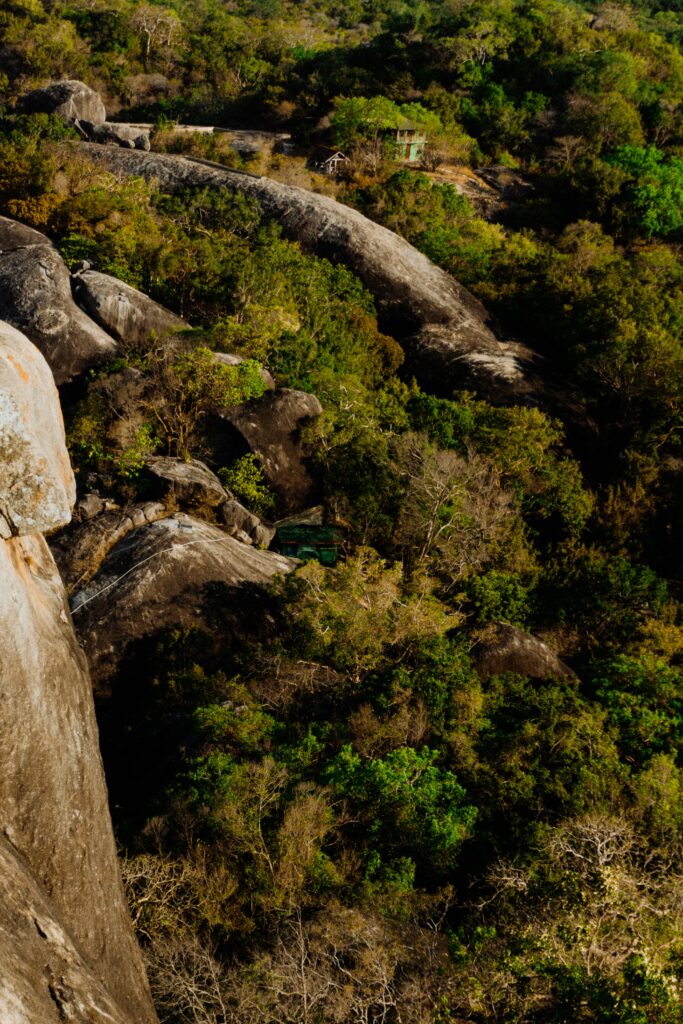
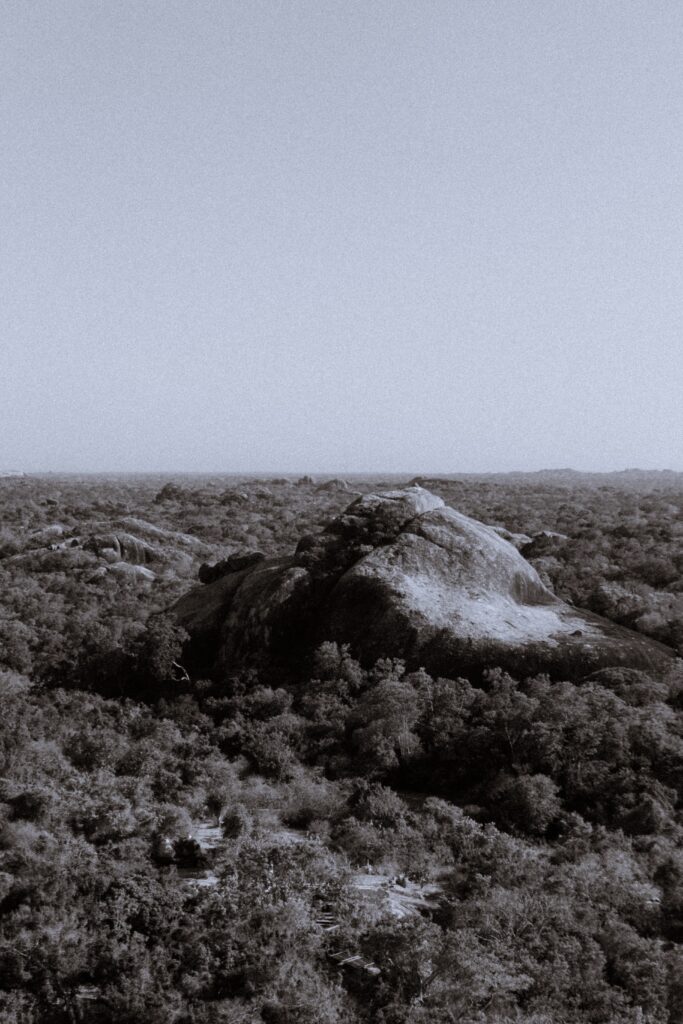
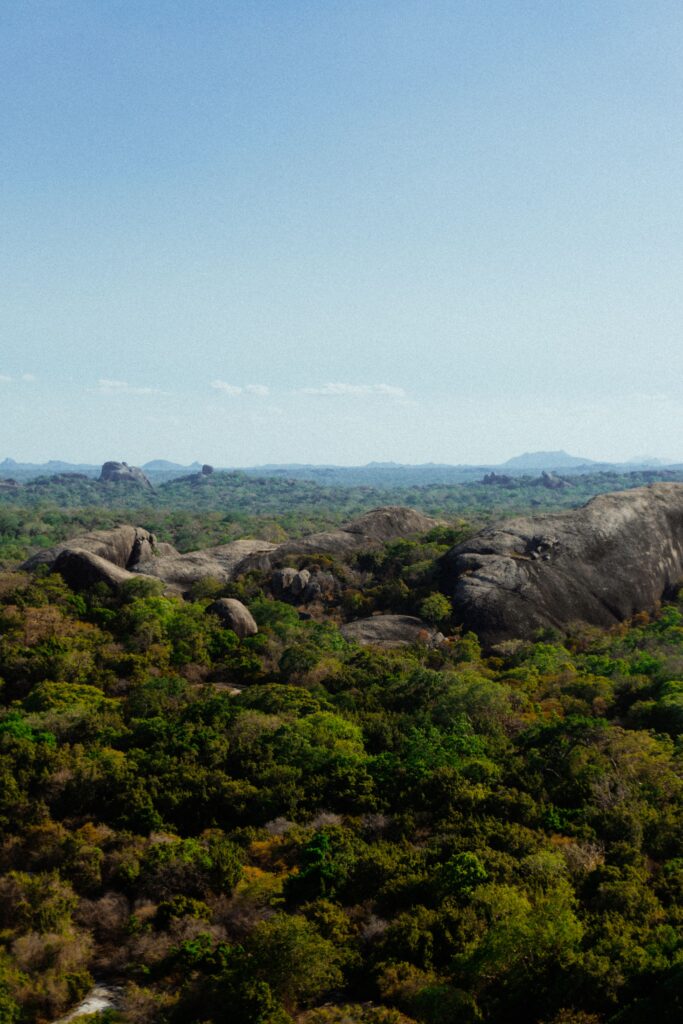
Historical Background
Kudumbigala was established as a retreat for Buddhist monks seeking solitude and meditation, embodying the Theravada tradition that flourished during the early Anuradhapura period. King Devanampiyatissa, who was instrumental in promoting Buddhism in Sri Lanka, supported the construction of this monastery as a sanctuary for forest-dwelling monks, known as tapovana bhikkhus, who practiced rigorous asceticism.
Architectural and Archaeological Significance
The monastery is perched on a series of rocky outcrops, offering panoramic views of the surrounding wilderness. It comprises over 200 natural rock caves, many of which have been used as meditation chambers for centuries. These caves were modified with drip ledges and inscriptions, some of which date back to the early Anuradhapura period, providing a glimpse into the lives of ancient monks and their benefactors.
One of the most remarkable features of Kudumbigala is its cylindrical stupa—the only one of its kind in Sri Lanka. This unique structure stands atop the highest rock in the complex and is believed to have housed relics of the Buddha or revered monks. From the summit, visitors can enjoy breathtaking views of the surrounding jungle and the distant Indian Ocean, making the climb a rewarding experience.
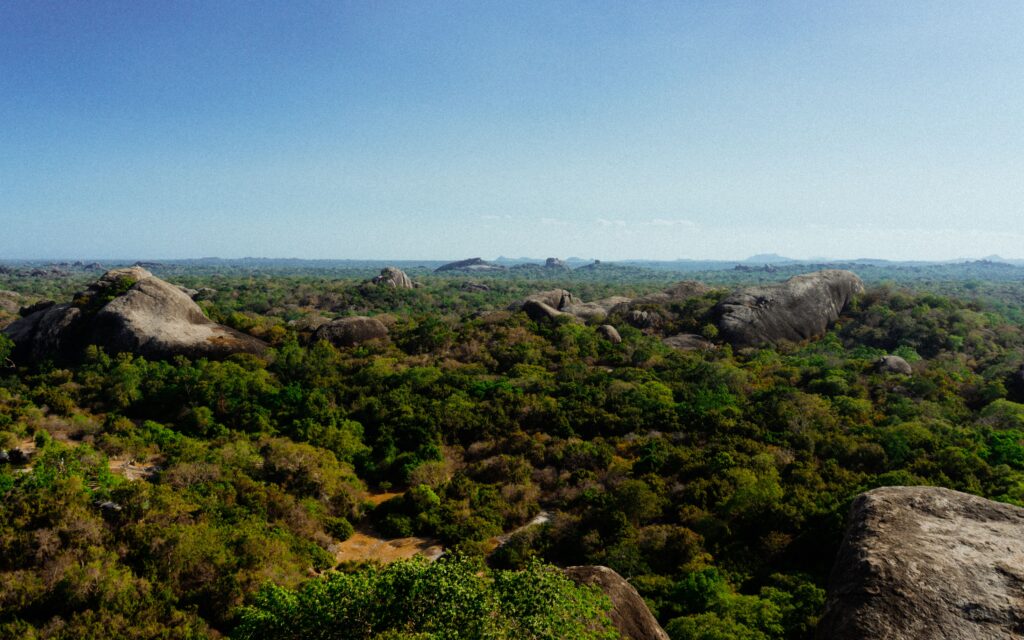
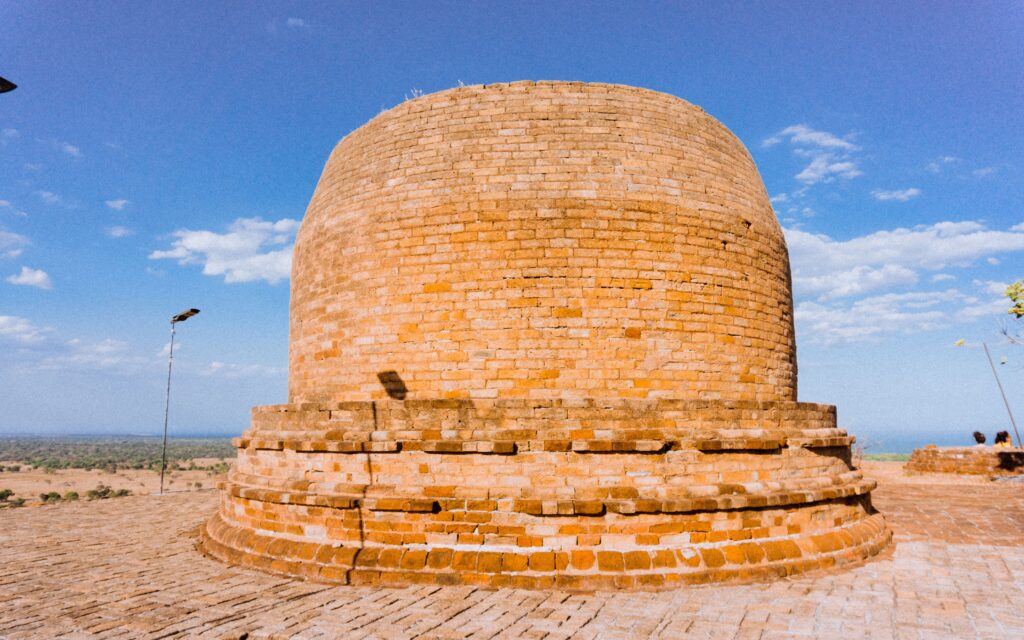

Spiritual and Cultural Legacy
Kudumbigala is one of the few monasteries in Sri Lanka where monks still practice traditional forest-dwelling asceticism, living in harmony with nature and adhering to a simple, meditative lifestyle. This makes it a living testament to the enduring spiritual traditions of Sri Lankan Buddhism. The serenity of the environment, coupled with the absence of large crowds, offers a unique opportunity for those seeking spiritual solace or a deeper connection with nature.
Wildlife and Natural Beauty
Surrounded by dense jungle and rocky terrain, Kudumbigala is not only a site of historical and spiritual significance but also a haven for wildlife. The surrounding sanctuary is home to a variety of animals, including elephants, sloth bears, and leopards. The rich biodiversity adds an element of adventure to the visit, as the journey to the monastery involves navigating through rugged paths and dense foliage.
Visitors are advised to descend from the rock before sunset due to the presence of wildlife, especially elephants, which are known to roam the area after dark. The journey to Kudumbigala, though challenging, is an adventure in itself, offering a sense of exploration and discovery rarely found in more frequented sites. It is advised to climb down before 05pm.

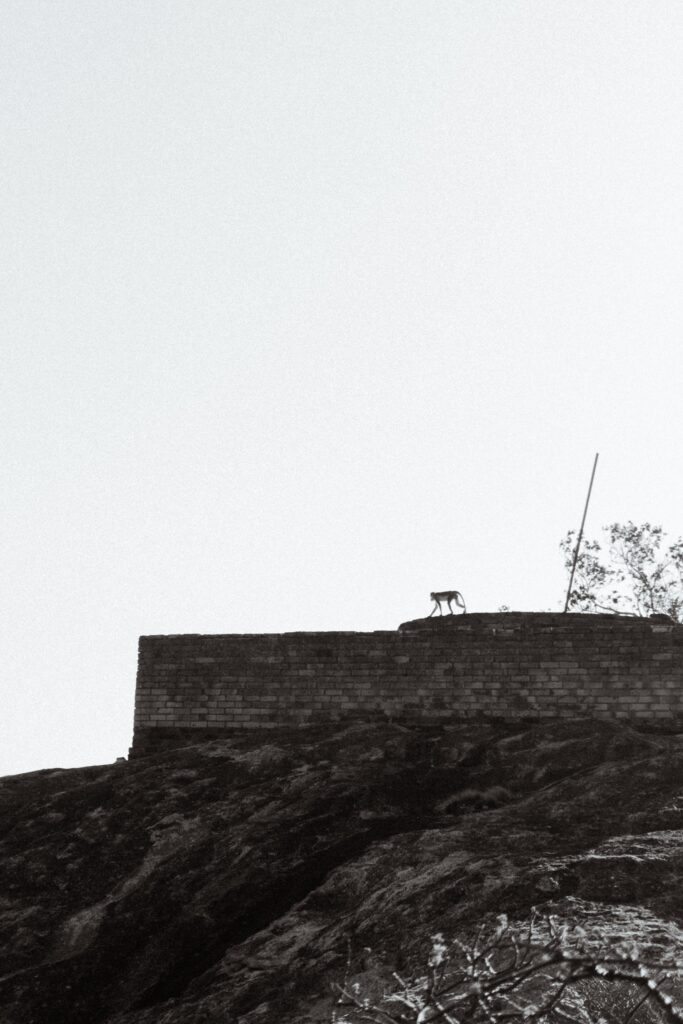

A Hidden Gem
Despite its historical and cultural significance, Kudumbigala remains relatively unknown and less visited compared to other religious sites in Sri Lanka, such as Anuradhapura or Polonnaruwa. This lack of commercialization preserves the site’s tranquil and untouched atmosphere, making it an ideal destination for those looking to escape the tourist trail and experience a more authentic, unspoiled side of Sri Lanka.
Kudumbigala Monastery, with its unique blend of history, spirituality, and natural beauty, offers an unparalleled experience for travelers and spiritual seekers alike. Whether you are interested in exploring ancient Buddhist traditions, embarking on a challenging hike, or simply enjoying the serene landscape, Kudumbigala stands as a testament to the timeless allure of Sri Lanka’s cultural heritage.
My journey in the Northeast

